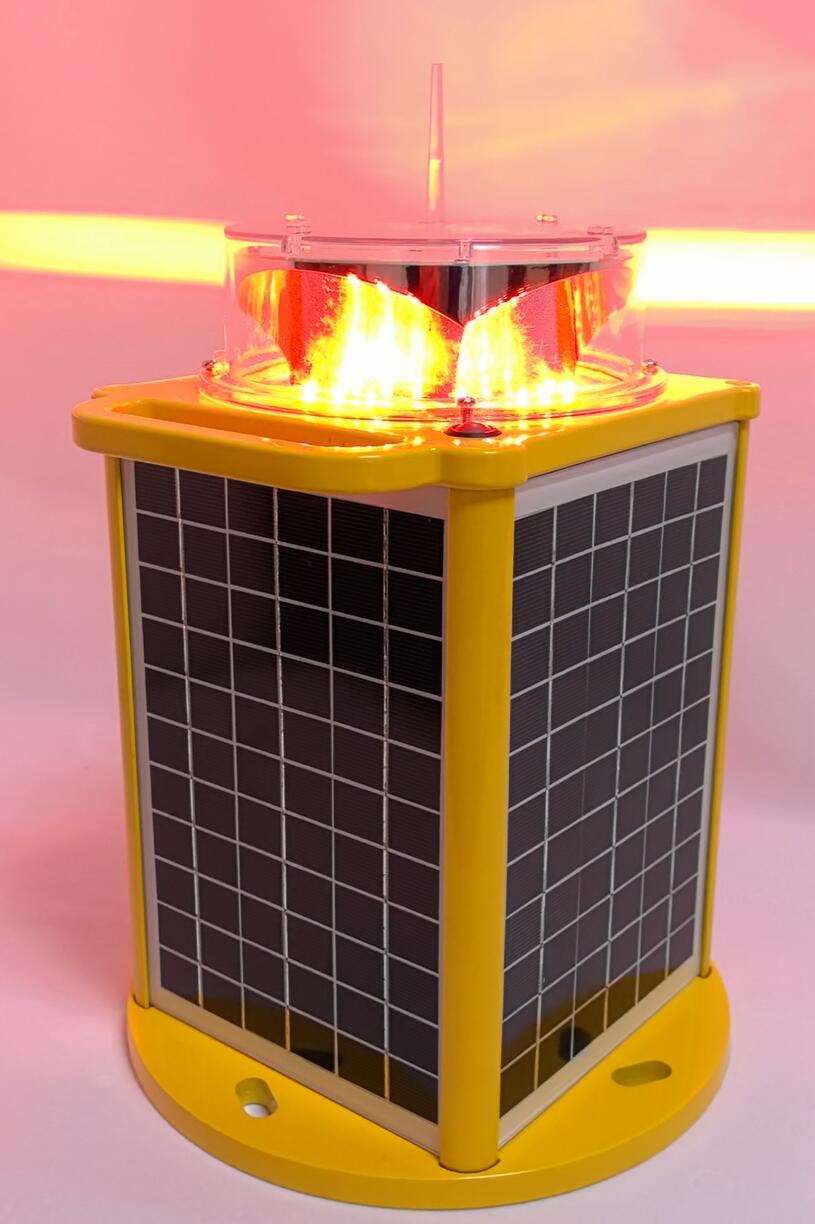Solar Powered Aircraft Warning Lights: Illuminating the Skies Safely
In the vast expanse of the sky, safety is of utmost importance, especially when it comes to aviation. One crucial element in ensuring the safety of aircraft is the use of warning lights. Among the various types available, solar powered aircraft warning lights have emerged as a remarkable innovation, revolutionizing the way we safeguard the airspace.
The Need for Aircraft Warning Lights
Aircraft warning lights serve multiple essential purposes. They are designed to make structures, such as tall buildings, towers, and other obstacles, visible to pilots during flight, especially during low - light conditions such as at night or in poor weather. These lights help pilots to identify potential hazards and avoid collisions, thereby protecting the lives of those on board the aircraft as well as preventing damage to property. Traditional warning lights often rely on electrical power sources that may be connected to the grid. However, in remote areas or in situations where power supply is unreliable, these traditional systems can face challenges.
The Advantages of Solar - Powered Solutions
Solar powered aircraft warning lights offer several distinct advantages. Firstly, they are environmentally friendly. Unlike traditional power - dependent lights that may use fossil - fuel - based electricity generation, solar - powered lights harness the energy from the sun. This renewable energy source reduces the carbon footprint associated with the operation of these warning systems.
Secondly, solar - powered lights are highly reliable in terms of power supply. They are equipped with solar panels that can absorb sunlight during the day and store the energy in batteries. This stored energy is then used to power the lights during the night or when sunlight is insufficient. In remote locations where it may be difficult or expensive to lay power lines, solar - powered warning lights can be easily installed without the need for extensive infrastructure development.
Moreover, these lights require relatively low maintenance. Once installed, there is no need for regular checks related to power connections from the grid. The only maintenance requirements usually involve ensuring the cleanliness of the solar panels to maximize their efficiency in absorbing sunlight and checking the battery health periodically.
How Solar Powered Aircraft Warning Lights Work
The operation of solar - powered aircraft warning lights is based on a simple yet effective principle. The solar panel, usually made of photovoltaic cells, converts sunlight into electrical energy. This energy is then directed to a charge controller. The charge controller is a crucial component as it regulates the charging of the battery. It prevents overcharging, which could damage the battery, and also ensures that the battery is charged efficiently.

The stored energy in the battery is used to power the light - emitting diodes (LEDs) of the warning light. LEDs are preferred due to their high brightness, low power consumption, and long lifespan. The design of the light fixture is such that it emits a specific pattern of light that is recognizable by pilots. For example, some warning lights may flash at regular intervals to attract attention more effectively. The color of the light also plays an important role. Red is commonly used for aircraft warning lights as it has high visibility and is associated with danger or warning in the aviation context.
Applications of Solar - Powered Aircraft Warning Lights
Solar powered aircraft warning lights have a wide range of applications. They are used on tall communication towers, wind turbines, and other structures that are located in areas frequented by aircraft. In the case of wind turbines, which are often located in remote areas with limited power infrastructure, solar - powered warning lights are an ideal solution. They ensure that the rotating blades of the wind turbines are visible to pilots, reducing the risk of collisions.
| Solar powered aircraft warning lights | 78uy |
Another application is in the marking of new or temporary structures. For construction projects involving tall cranes or scaffolding in urban areas, solar - powered warning lights can be quickly installed to provide immediate warning to aircraft. These lights can be easily removed or relocated once the construction is completed. In addition, in disaster - affected areas where power supply may be disrupted, solar - powered warning lights can be used to mark any structures that could pose a threat to low - flying aircraft involved in relief operations.
Challenges and Solutions
Despite their many advantages, solar - powered aircraft warning lights also face some challenges. One of the main issues is the availability of sunlight. In regions with long periods of cloudy weather or during the winter months when daylight hours are shorter, the solar panels may not be able to absorb sufficient sunlight to fully charge the batteries. To address this, some advanced systems are equipped with larger solar panels or more efficient battery storage technologies. Additionally, backup power sources such as small generators or additional battery packs can be used in case of prolonged power shortages.
Another challenge is the durability of the components in harsh environmental conditions. The solar panels, batteries, and light fixtures need to be able to withstand extreme temperatures, high winds, and other weather elements. Manufacturers are constantly working on improving the design and materials used in these components to enhance their durability. For example, using more robust and weather - resistant materials for the casing of the lights and the solar panels.
In conclusion, solar powered aircraft warning lights are an innovative and sustainable solution for enhancing aviation safety. Their numerous advantages, including environmental friendliness, reliability, and low maintenance, make them a preferred choice for marking obstacles in the airspace. With continuous improvements to overcome the existing challenges, these lights are set to play an even more significant role in safeguarding the skies in the future. As the aviation industry continues to grow and new structures are built in the flight paths of aircraft, the use of solar - powered warning lights will contribute to a safer flying environment for all.
